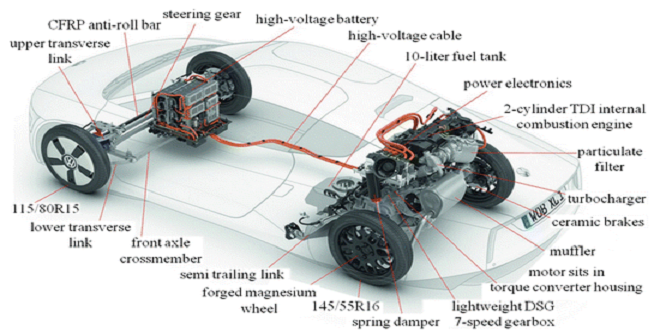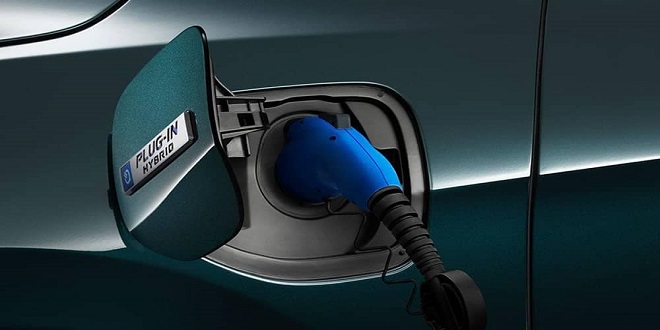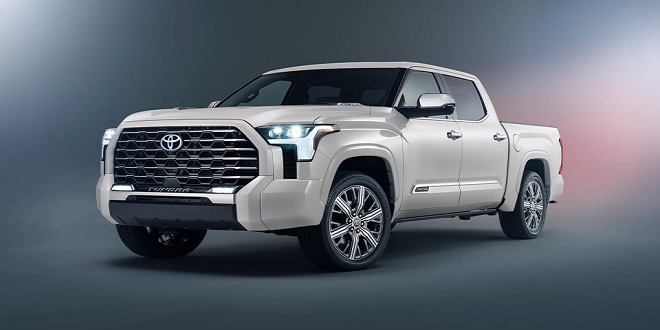Combinations of Propulsion Systems, Energy Sources, Energy Converters, and Storage

Configuration of the Propulsion System
The assessment of propulsion systems for automobiles in terms of energy demand and energy source, as well as in relation to ecological, technical, and economic criteria, leads to the awareness that a universal configuration is not realistic. The specific benefits of different functional modules are arguments for their effective combination. Development trends are mainly determined by the following aspects:
- The emission of pollutants and CO2 will be drastically reduced. Zero-emission vehicles are a stringent necessity for congested urban areas and for protected landscapes.
- The requirement for comfort, including car acclimatization in summer and winter, and for power and torque are important criteria of acceptance.
- The strong development of electronic systems recommends the integration of propulsion control into the whole system.
- Propulsion by motor with energy conversion on board via a thermal engine (piston engine, Winkle engine, gas turbine, Sterling engine) using liquid or gaseous fuel, working in a limited domain of load and speed, as a current generator in combination with electric energy storage in a battery.
- Propulsion by motor with energy conversion on board via a fuel cell using liquid or gaseous fuel, in combination with storage of electric energy in a battery.
Such concepts are by no means new, similar to electric cars with hub motors or to fuel cells. In Belgium in 1900, Henri Pieper conceived a car with a gasoline engine under the hood and a motor under the driver’s seat.
The engine was utilized at constant cruise and load as a current generator for charging the battery, and propulsion was achieved by motor only. At a higher load, required for acceleration or for ascending slopes, both engine and motor were coupled for traction.
Propulsion by Motor, With a Thermal Engine as Current Generator: Serial Hybrids
Thus, propulsion by the motor is very advantageous in urban situations because of the speedy run-up and operation without changing gears. This propulsion form, which was tested many years ago by Ferdinand Porsche, has the disadvantage of an insufficient on-board energy supply if using batteries.
Fuel cells offer a certain enhancement, but they are not a clear alternative for large series applications because of the high technical complexity of both the fuel cell system and the hydrogen storage system, which leads to a high price but does not improve the operation range sufficiently.
Nevertheless, propulsion by motor or motors offers remarkable advantages in terms of vehicle dynamics, vehicle stability, and freedom of movement. Traditional motors situated on the front and rear axle could be replaced by newly developed hub motors integrated into the wheels, which could radically change propulsion concepts.
A hub motor of this type usually achieves 20 kW power and 200 N m torque. If sufficient electric energy can be provided, a hub motor can be placed in every wheel. The classic vehicle axles are in this case no longer indispensable.
Criticism of hub motors for vehicles is polarized on the no amortized vibration of the wheels, which is provoked by the motor mass under the spring. A concept such as “corner” developed by Siemens/Continental is a convincing argument against such objections. The corner system turns the wheel into an intelligent robot.
The wheel position is defined by means of the six degrees of freedom within a system of coordinates. Exchange of information with the electronic control unit is realized by controller area network, local interconnected network, and Flex Ray bus systems in real time. The development plan stipulates the integration of steering, damping, and braking into the wheel with a hub motor. Similar hub motors have been developed by Volvo and are being tested in the Volvo C30 with serial hybrid propulsion.
Last word
For intelligent wheel robots, a supply of on-board electric energy is imperative. A solution with basic advantages is the use of thermal engines as on-board current generators instead of fuel cells, which have a higher technical complexity for the same efficiency. The addition of an energy storage module to such a generator allows valuable energy management. Such concepts are increasingly becoming the subject of development.





